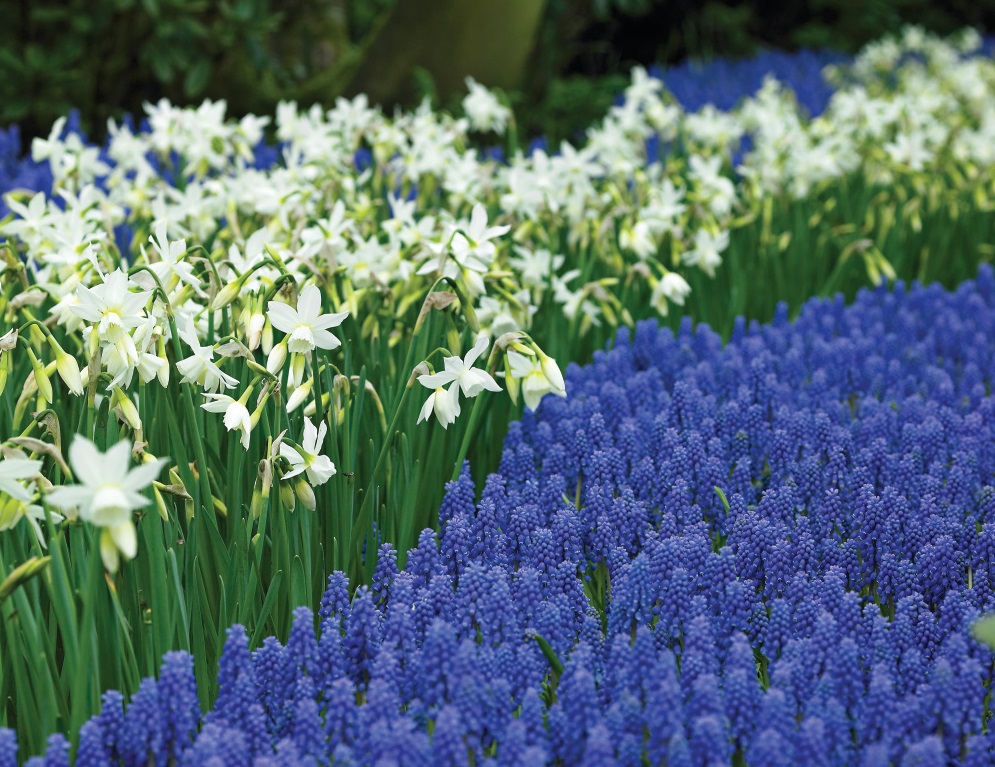In the intricate world of gardening, companion planting stands as a testament to the harmony achievable within a garden ecosystem. This method not only enhances yields but also contributes to the visual symphony of your outdoor space. When it comes to daffodils, these vibrant heralds of spring have unique needs, making the choice of companions crucial for an impressive display.
Understanding the nuances of daffodil companion planting becomes an art, a dance where flowers complement each other, creating a spectacle that transcends mere cultivation. It is within this dance that we explore the intricate relationship between daffodils and their companions, addressing the challenges and celebrating the possibilities.
Understanding Daffodils and Companion Planting
Daffodils, proud members of the Narcissus genus, boast a resilience that sets them apart in the garden world. With a botanical classification that places them in the Amaryllidaceae family, these blooms, also known by common names like narcissus or jonquils, stand tall in the face of diseases and pests.
Companion planting, a practice deeply rooted in both science and tradition, finds a unique application with daffodils. Unlike many other garden plants, daffodils are not particularly susceptible to pests or diseases. Instead, the focus shifts to creating a visual masterpiece, leveraging the vibrant color palette they bring to the garden.
The introduction of daffodils into the landscape comes with a peculiar challenge – their fading foliage. As the flowers dazzle us with their bright hues, their leaves play a crucial role in nourishing the bulbs for the next growing season. However, traditional methods of dealing with this foliage, such as trimming or braiding, are impractical. This challenge sets the stage for the art of companion planting to shine.
The Challenge of Daffodil Foliage
To understand the challenge posed by daffodil foliage, one must recognize its role as a nutritional powerhouse for the bulbs. These seemingly messy leaves are a crucial part of the plant’s life cycle, facilitating the process of photosynthesis that ensures the bulbs have the nutrients needed for the next bloom.
Common misconceptions about dealing with daffodil foliage often lead gardeners astray. The desire for a tidy garden might tempt one to trim or braid these leaves, but this can be detrimental to the plant’s future growth prospects. The leaves serve as food storage units, containing essential nutrients for the upcoming season. Any harm to these sources of chlorophyll could compromise the daffodil’s ability to bloom and spread.
The need for suitable companions becomes evident – plants that can gracefully conceal or enhance the fading foliage without causing harm. This marks the beginning of the journey into the world of thoughtful companion planting, where choices are made not just for aesthetics but also for the well-being of the plants involved.
Best Daffodil Companion Plants
The art of companion planting for daffodils involves selecting plants that not only offer visual appeal but also serve as strategic partners in the garden ecosystem.
Tulips
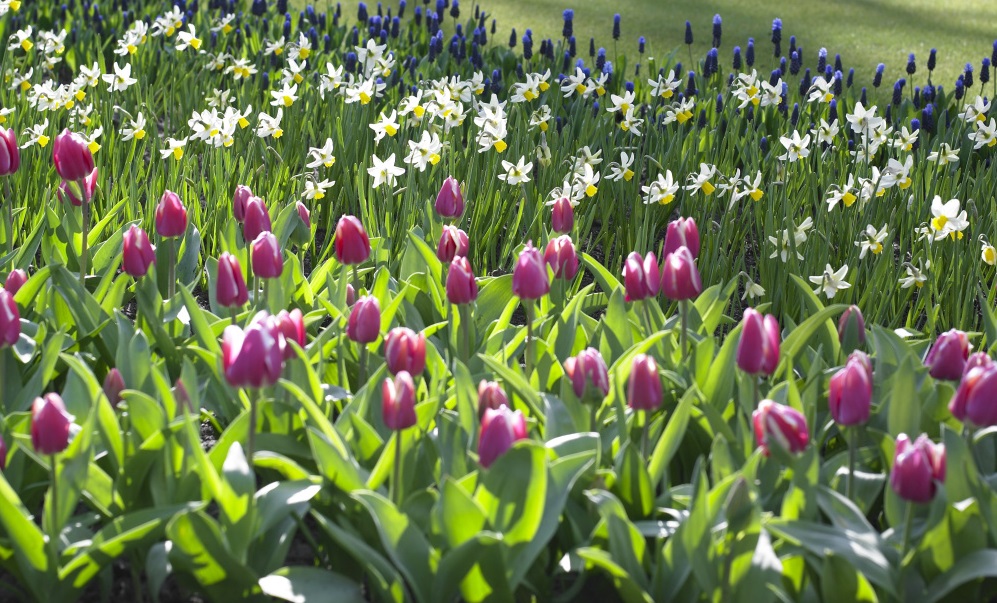
Creating a seamless transition of colors, tulips strategically planted in front of daffodils offer a breathtaking display. With both bulbs sharing the same planting season, this dynamic duo promises an effortless and captivating garden showcase.
Grape Hyacinths
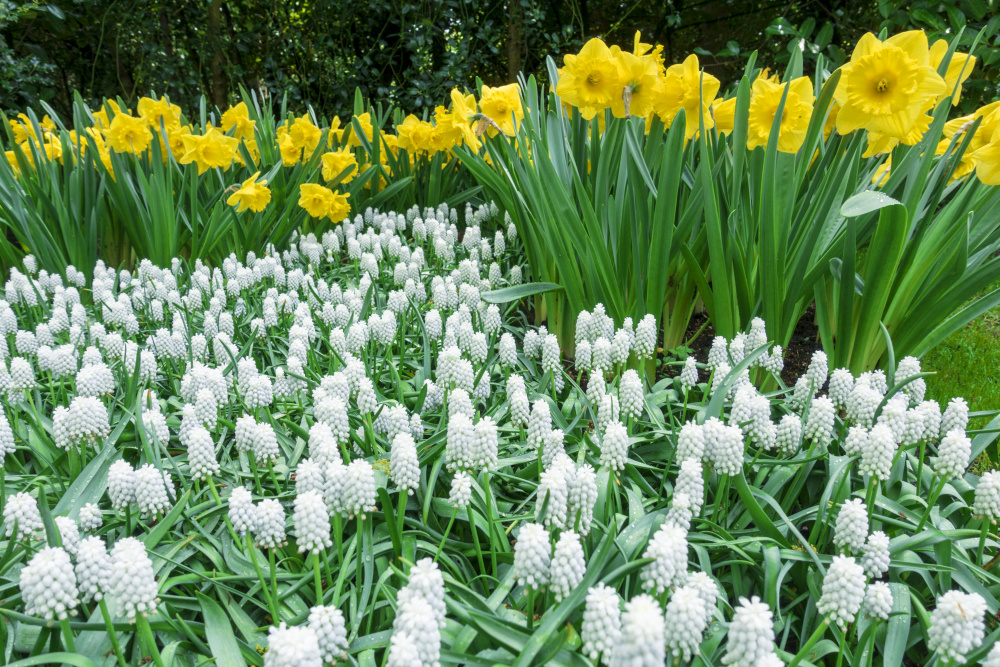
The visual delight of combining bright blue grape hyacinths with the sunny yellows of daffodils is unparalleled. These low-growing companions not only contribute to an aesthetic color scheme but also avoid competing for sunlight or water, ensuring a cohesive and thriving garden.
Daylilies
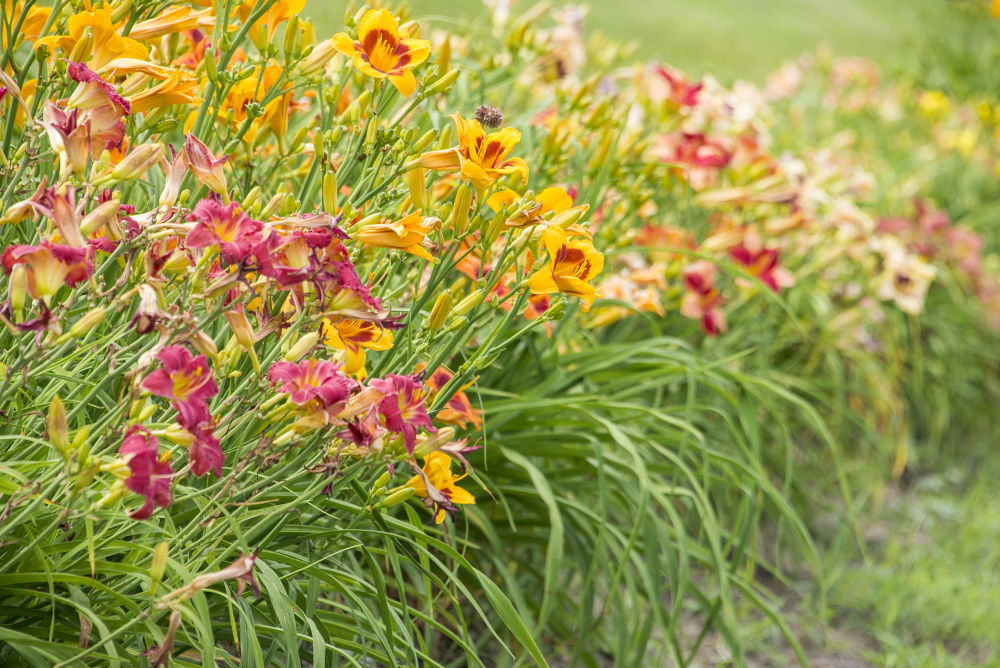
As midsummer approaches and daffodils start to fade, daylilies step into the spotlight. Their continuous bloom provides ongoing visual interest while skillfully concealing the waning foliage of daffodils. The strategic pairing of these perennials ensures a harmonious garden display.
Azaleas and Rhododendrons
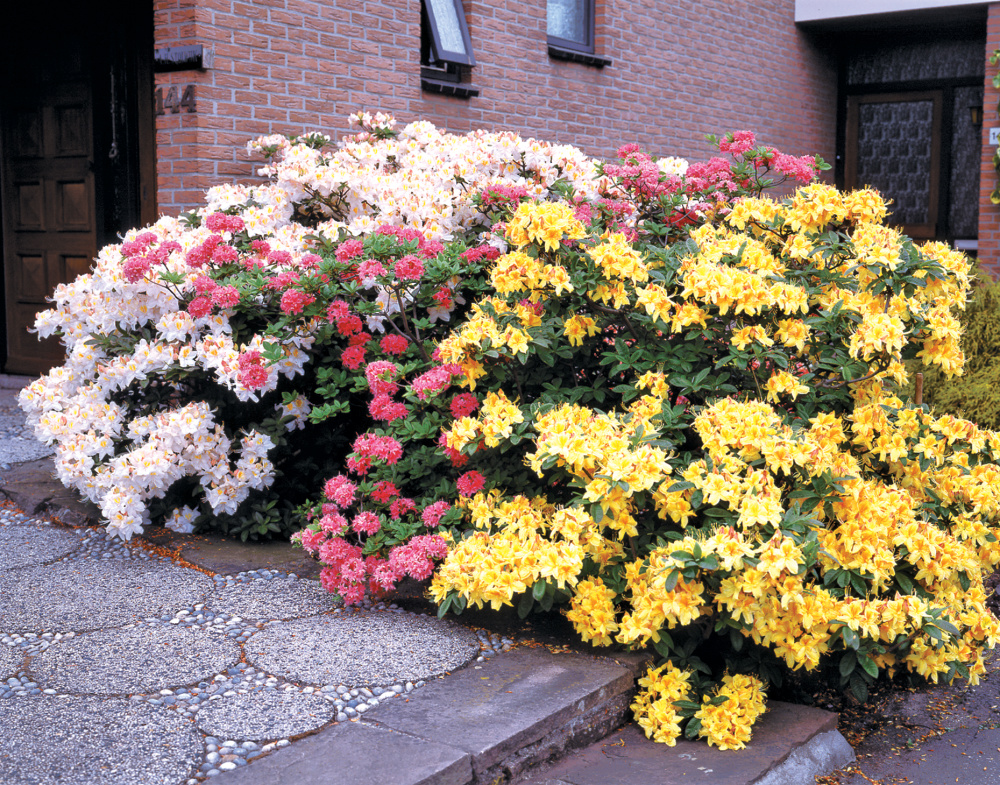
These flowering shrubs, with their pastel colors, emerge as excellent companions for daffodils. Beyond the visual spectacle they create together, azaleas and rhododendrons serve the practical purpose of screening the fading daffodil leaves, offering a seamless transition in the garden.
Forsythia
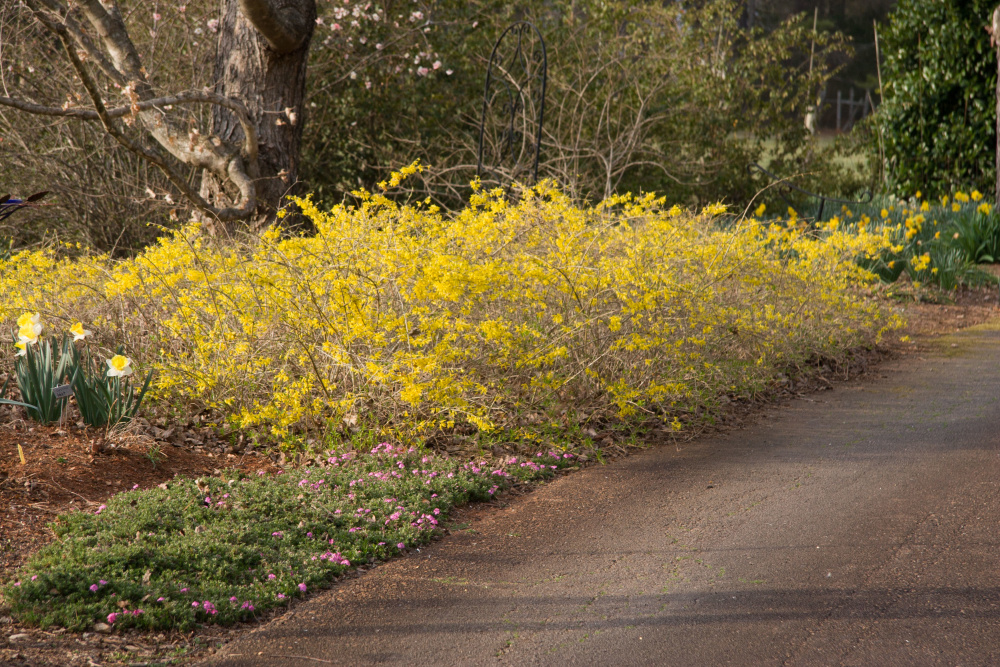
Known for its early bloom, forsythia aligns perfectly with the lifecycle of daffodils. Their coexistence is marked by a visual celebration of spring, with forsythia’s bright yellow flowers complementing the vibrant hues of daffodils. The key advantage is their ability to coexist without competing for essential resources.
Plants to Avoid Near Daffodils
While thoughtful companion planting elevates the garden, it’s equally crucial to avoid pairings that may hinder the growth of daffodils.
Annuals, Especially Vegetables
The frequent replanting associated with annuals disrupts the stability preferred by daffodils. Vegetables, with their distinct nutritional needs and rapid growth, can compete for resources, potentially impacting the natural cycle of daffodils.
Beeches, Dogwoods, and Maples
Shallow-rooted trees, such as beeches, dogwoods, and maples, pose a potential threat to the root system of daffodils. Intertwining roots may lead to mutual suffering, urging gardeners to maintain a cautious distance.
Plants That Squirrels and Rabbits Love
While daffodils deter rodents, planting alongside favorites of squirrels and rabbits may inadvertently attract these creatures. This can lead to damage not only to daffodils but also to neighboring plants.
Taller Perennials That Bloom at the Same Time
Avoiding overshadowing is crucial when selecting companions for daffodils. Tall perennials that bloom simultaneously can block sunlight, hindering the growth of the daffodils. Careful consideration ensures that each plant gets the necessary light to thrive.
Daffodil Companion Plants in Conclusion
In the enchanting dance of nature, companion planting emerges as the choreographer that orchestrates a harmonious garden. Daffodils, with their vibrant presence and unique requirements, invite you to explore this art form. Continue your journey of cultivating a flourishing garden by delving into additional guides on growing daffodils. Let your garden tell a story of colors, shapes, and the beauty of thoughtful companionship.
This comprehensive exploration of daffodil companion planting offers a rich tapestry of insights, ensuring that your garden becomes not just a collection of plants but a living canvas where each bloom plays a vital role in the overall masterpiece.

